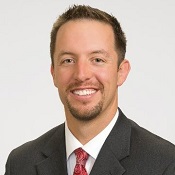
Every journey starts with the right attitude, passion, and confidence.
Many people find networking to be challenging. Most people find a way to do the things they are passionate about. If you're not passionate about networking, it is possible that you simply do not see the wealth of value that comes from developing a healthy network.
I've interviewed over 1500 people in the last 23 years. Not just a surface interview, but an in-depth interview. I always ask the question, "Where did you find your current job?" In 70% to 80% of the cases regardless of level, people found their next opportunity through their network, a relationship built over years.
The Value of a Healthy Network:
- Competitive Edge: A large and deep network will give you information, you could never reach in isolation. Too many of us become trapped within the four walls we work in.
- Resources: Tap into subject matter experts, fill positions, and gain valuable Industry information from known, credible sources.
- Reputation Management: Being attacked on the internet can tarnish your reputation. A large and deep network that supports and believes in you can minimize that situation.
- our Next Opportunity: I can't tell you how many times an opportunity was offered to a particular person because they were known within their network and "believed it would be a good fit." You can secure your next opportunity and your career with little competition through networking.
- Time in transition: It has been proven that there is a direct correlation between the size and depth of your network as it relates to the time you are between jobs. The better your network is, the shorter your transition will be.
Now that you understand why it is important to have a solid network, it should be easy to get passionate about expanding it. If you are unsure about where to begin, below are a few ideas to get you started
Keys to Expanding Your Network:
- Be intentional: Dedicate yourself to at least two calls a week.
- Choose wisely: Reach out to both people you already know but are not in regular contact with and new people you would like to connect based on your next career step, resources, influence, and information.
- Plan your call: Do your homework- there is so much information out there that you shouldn't have any problem knowing with confidence your opening line or question.
- Be Reciprocal: Give your audience as much value as they give you.
Enjoy the Journey
Not everyone will want to join your network, and that is ok! Keep trying. Expanding your network is a learned skill that will improve with practice. Develop a system that will help you recall information from past interactions and keep you on track to follow up in the future. As long as you are moving relationships forward, YOUR EFFORTS WILL BE SUCCESSFUL.
If you would like more tips of how to add value to your network including in-depth training on what makes a great network call, then let me know. I am ready to share my secrets to success!
Jim
Connect with us on LinkedIn and join our Active Network Program.


















